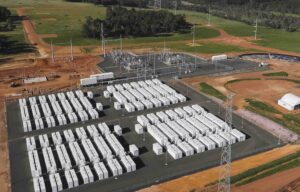Fresh from being recognised as the cheapest form of electricity in history by the conservative International Energy Agency, a new study has outlined three key innovations that will enable it to continue down the cost path.
More than 580 gigawatts of solar PV had been installed by the end of 2019, with another 142GW due to be added by the end of 2020. And new research from energy and renewables analysts Wood Mackenzie has predicted that solar module costs will continue to fall through the 2020s, driven by improvements in module efficiency and power class.
“Module technology innovations, in addition to hardware cost reduction, will be the quintessential driving force that propels the continuous reduction of solar LCOE (levellised cost of energy) in the new decade,” said Dr Xiaojing Sun, a senior research analyst at Wood Mackenzie.
The new research, Solar PV Module Technology Market Report 2020, examined three technologies that are expected to help improve solar module power class and performance – large wafer, n-type cells, and cell- and module-level techniques.
One of the areas of significant cost reductions will from the large modules being produced by majority of the major silicon module manufacturers, with many of them on track to commercially produce large modules between the fourth quarter of 2020 and the fourth quarter of 2021, says report author Dr Xiaojing Sun.
“We found that PV modules made of large wafers, such as the M6, M10, or G12 format, could reduce the capex of a utility-scale solar project by 3% to 9%,” she said. “The cost savings would be appealing to solar developers and installers, which will drive the market adoption.”
According to Wood Mackenzie’s data, the total module manufacturing capacity of M6, M10, and G12 wafer-based modules will reach 28GW, 63GW, and 59GW, respectively, by the end of 2021.
Beyond that, the production capacity of modules using M10 and G12 wafers by 2025 is forecasted to exceed 90GW, making them the dominant technologies by manufacturing capacity.
“It is important to point out that the market adoption of large modules is dependent on the co-evolution of balance-of-system components such as inverters and trackers to accommodate the higher current and the larger size,” said Dr Sun.
“Multiple industry alliances have been formed since early 2020 to ensure the entire solar ecosystem evolves to support the adoption of large modules. If the industry’s efforts bear fruit, we forecast that large module shipments in 2021 will account for approximately 40% of the total shipment of crystalline silicon modules. By the end of 2025, modules made with wafer sizes smaller than M6 will phase out of the market.”
Wood Mackenzie’s investigation of technological innovation in n-type modules showed that types such as HIT and TOPCon could generate more power per panel due to higher cell efficiencies while displaying lower degradation rates.
However, unlike large modules, n-type modules do not currently yield system capex and LCoE savings in utility-scale solar projects, and Wood Mackenzie expects that the high product costs of n-type modules could offset the system-level non-module cost savings.
“Our analysis shows that TOPCon and HIT modules will need a power class premium of at least 40W and 90W, respectively, or a 6% and 20% price cut in order to be competitive with mono PERC,” Dr Sun said.
“Admittedly, these are tall orders. Nevertheless, significant efficiency improvement and production cost reduction are n-type modules’ must-take path to succeed mono PERC as the next generation solar module of choice.”
The report’s claim that these technological innovations may lead to significant increases in module power class, better performance, and more versatile applications, was highlighted most clearly recently by a new study from researchers at the University of York, who found that designing solar cells with checkerboard lines could increase their ability to absorb light by 125% and could lead to a wider use of renewable energy.
Of particular importance was the possibility that this new solar cell design could reduce the thickness of solar modules, thus opening up more avenues and applications for solar to reach.
“We found a simple trick for boosting the absorption of slim solar cells,” said Dr Christian Schuster from the Department of Physics at the University of York.
“Our investigations show that our idea actually rivals the absorption enhancement of more sophisticated designs — while also absorbing more light deep in the plane and less light near the surface structure itself.
“This design offers potential to further integrate solar cells into thinner, flexible materials and therefore create more opportunity to use solar power in more products.”










